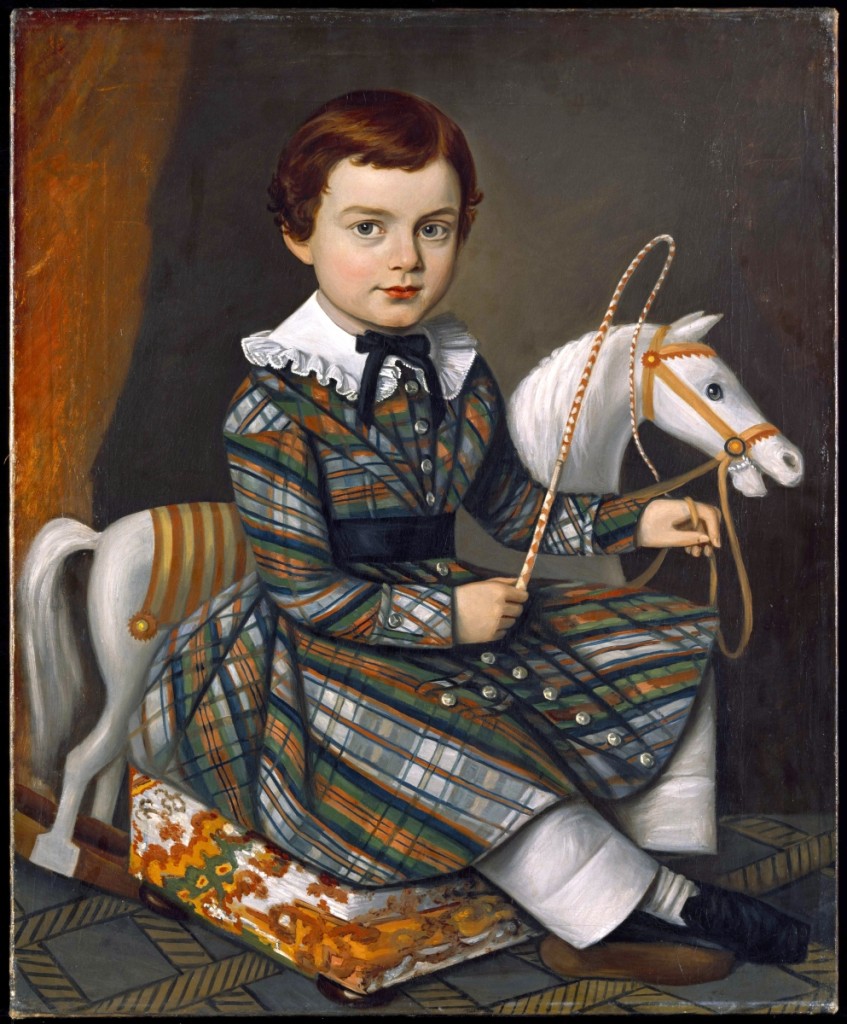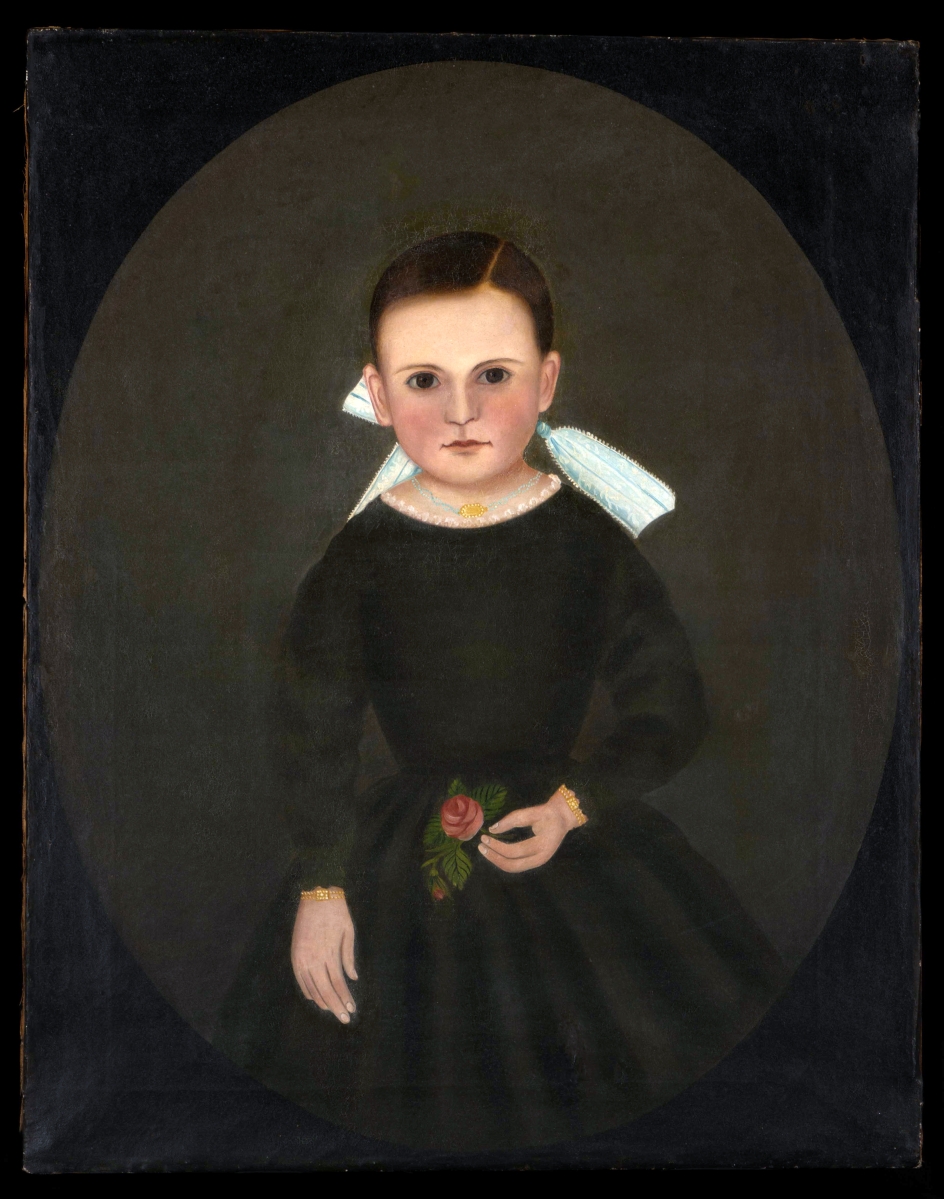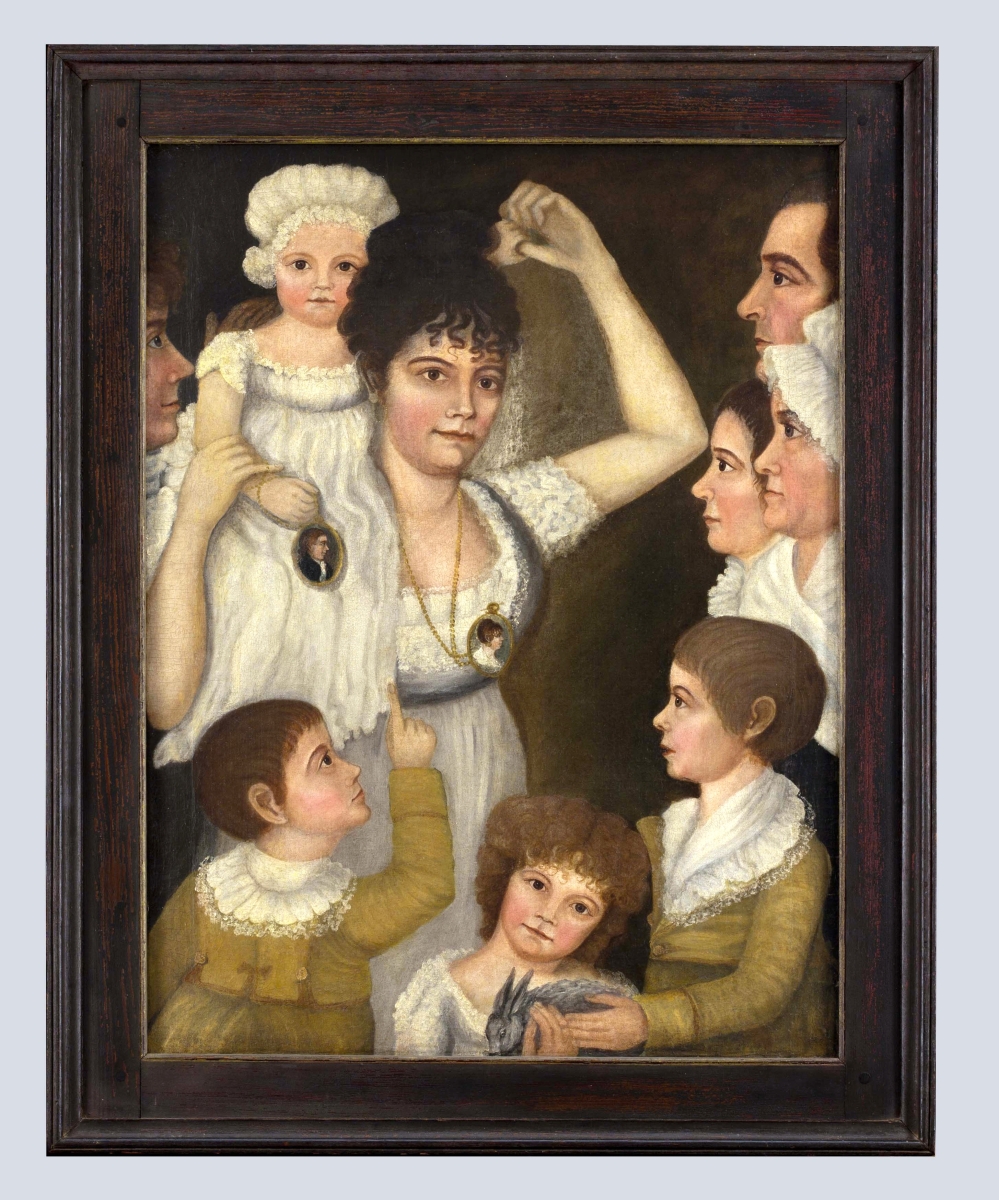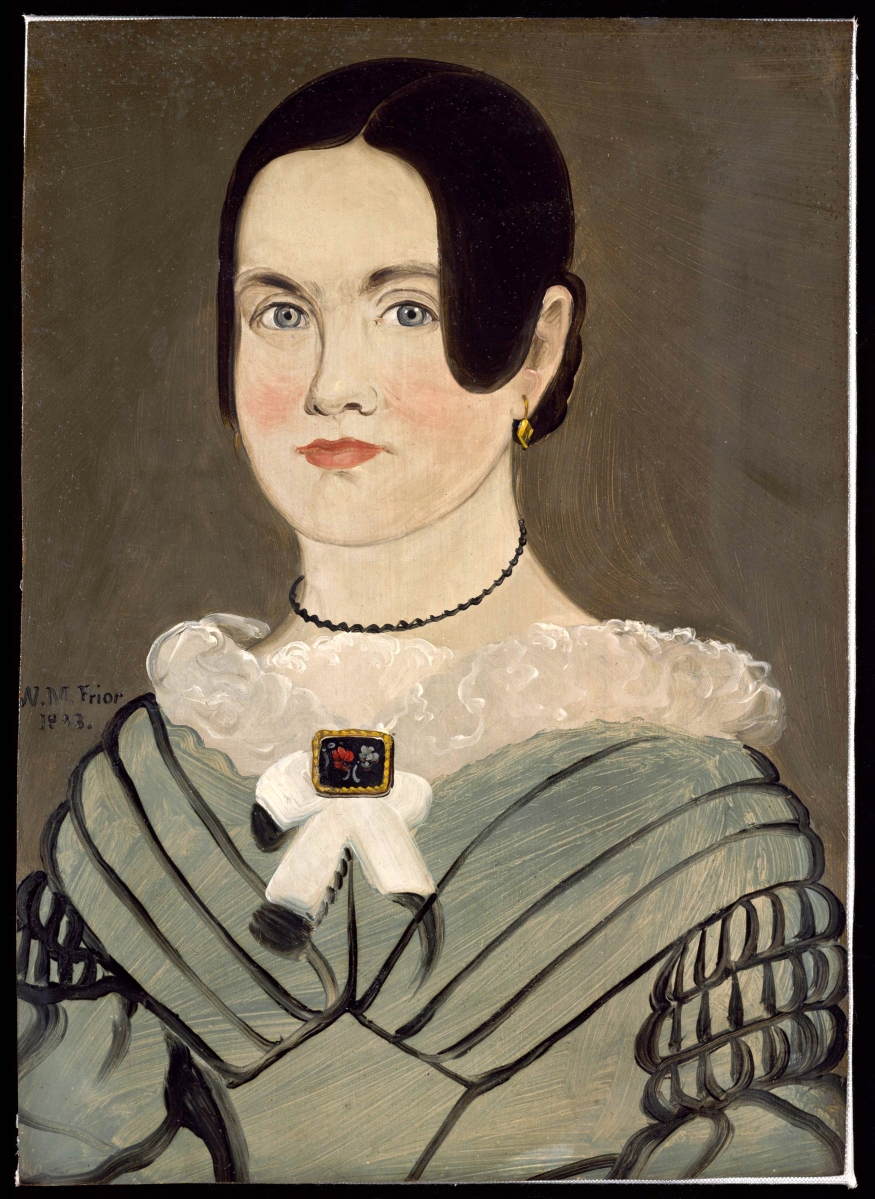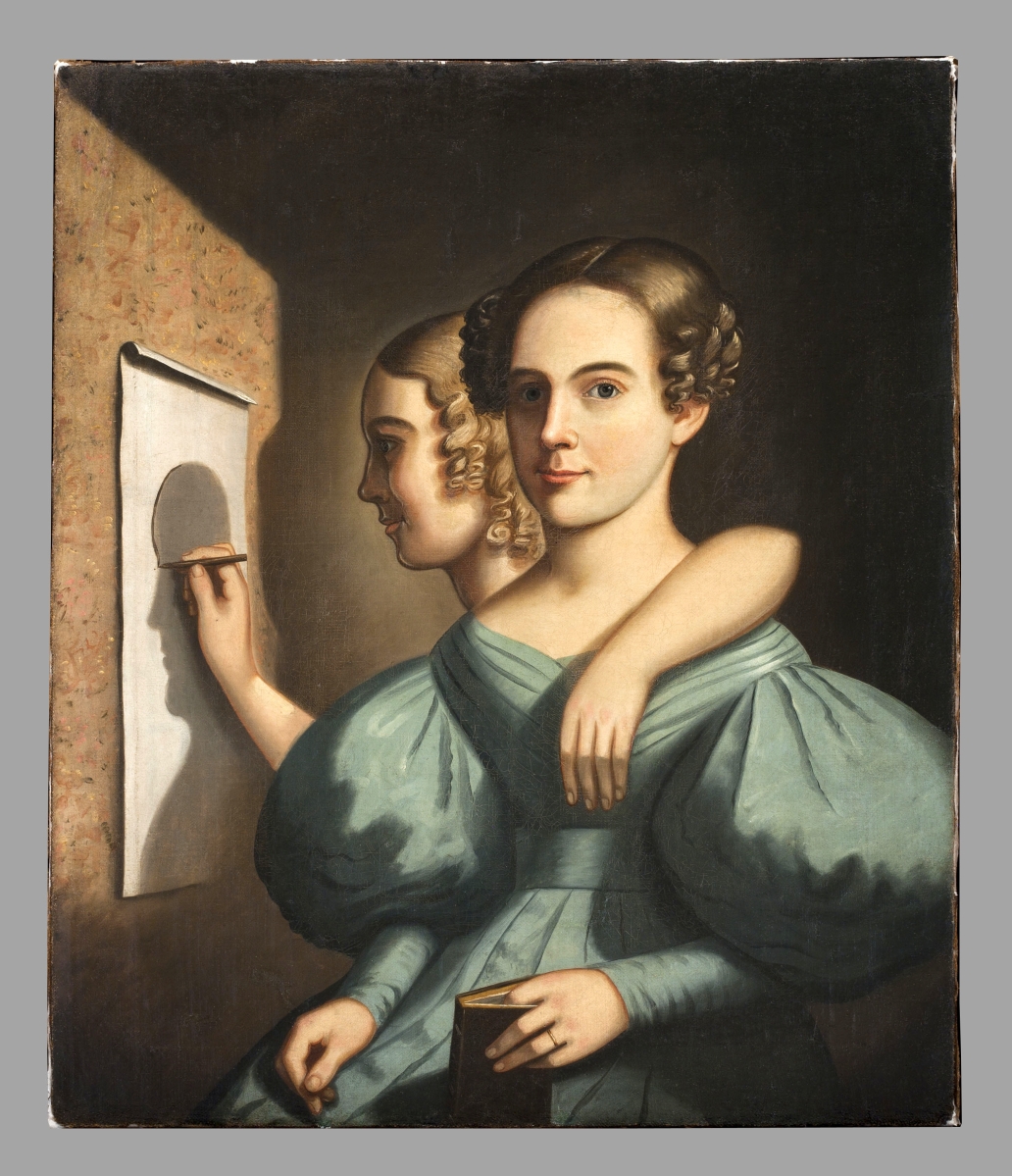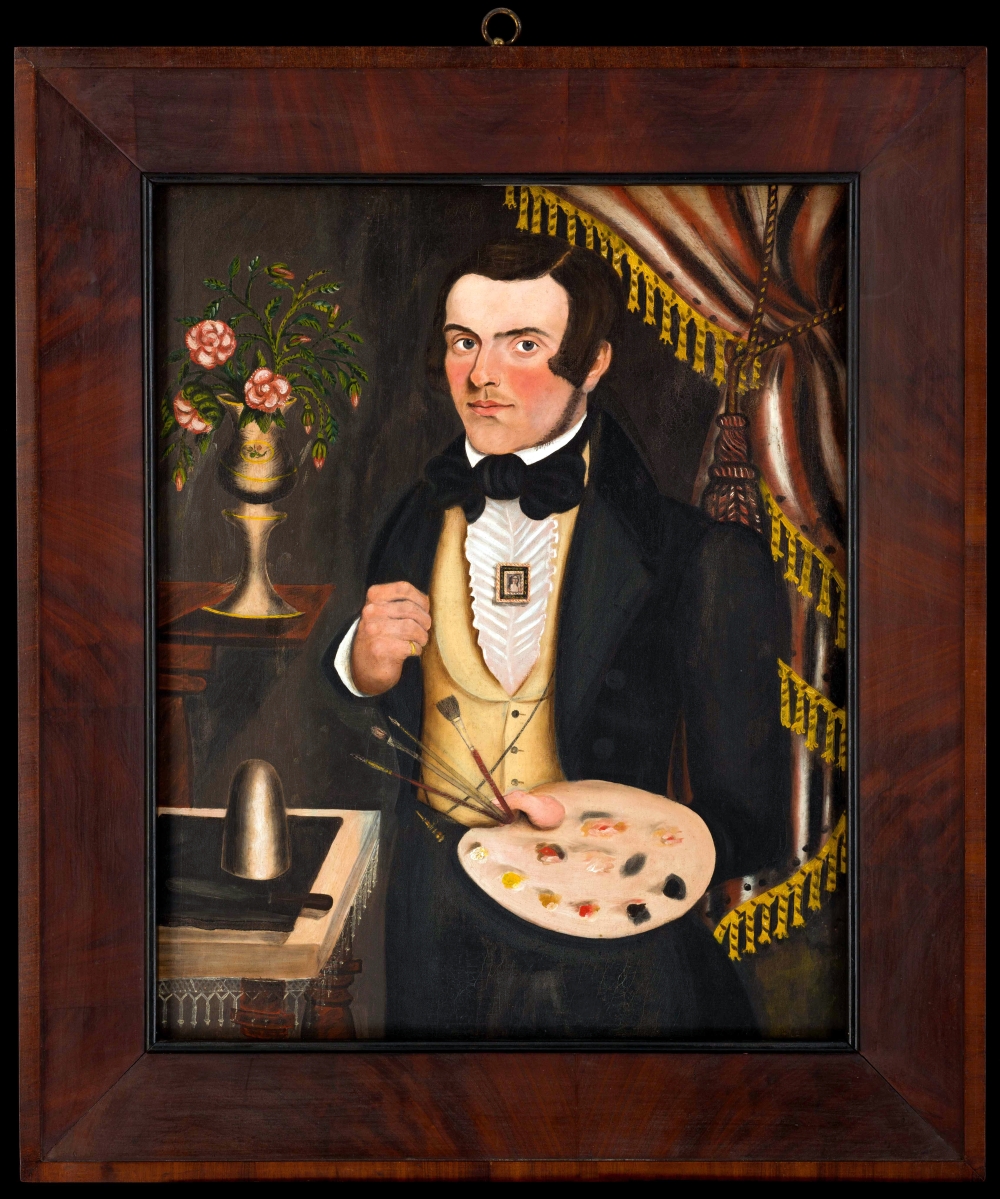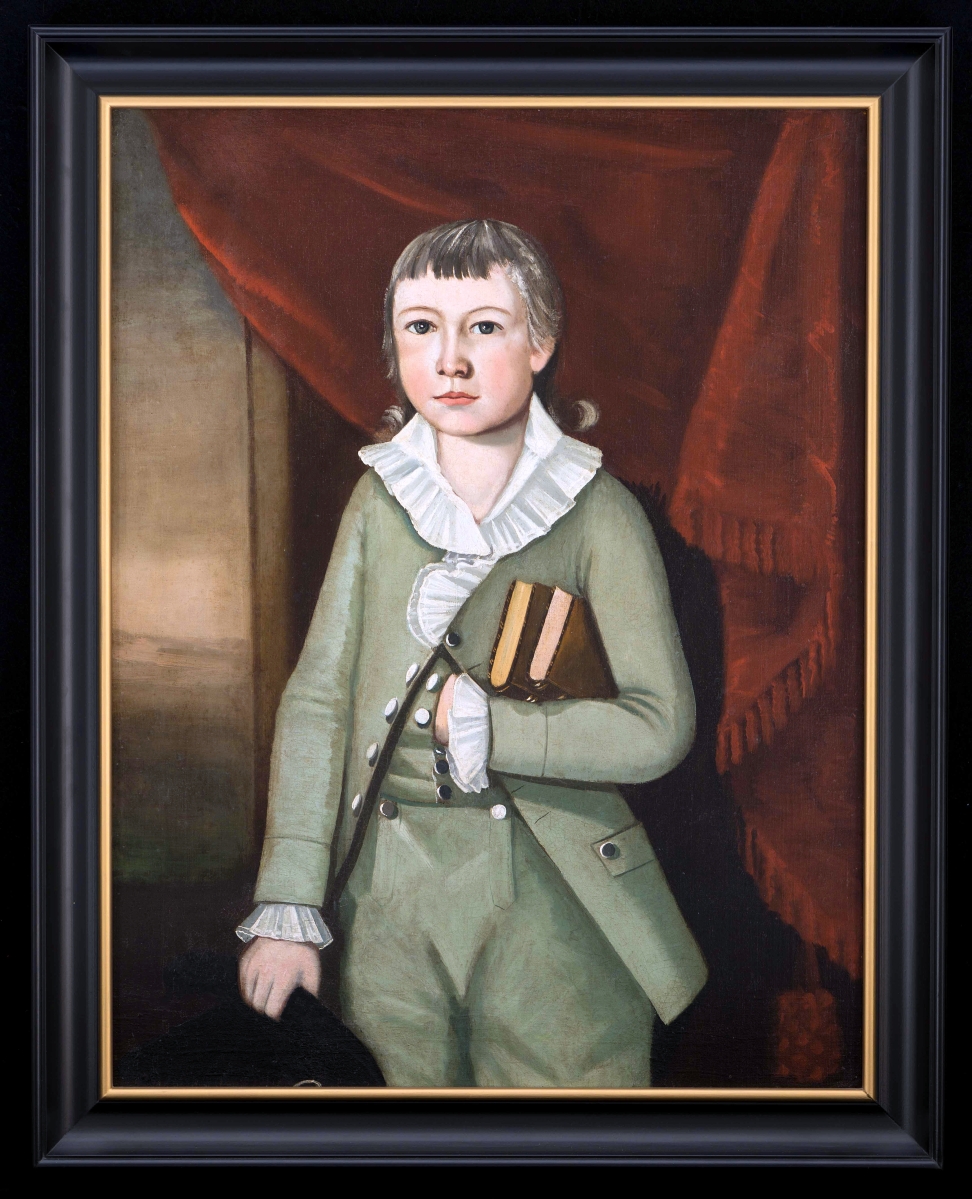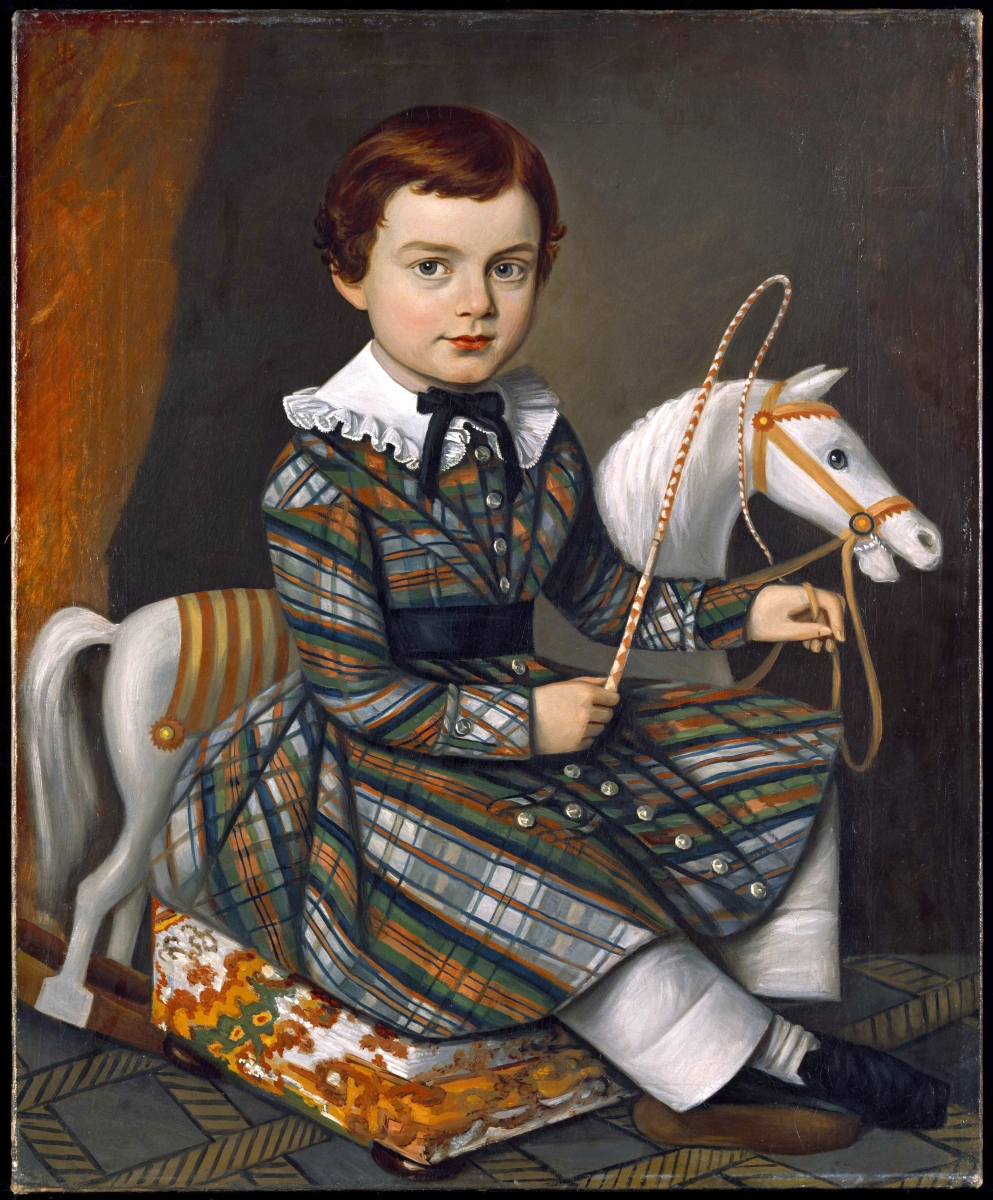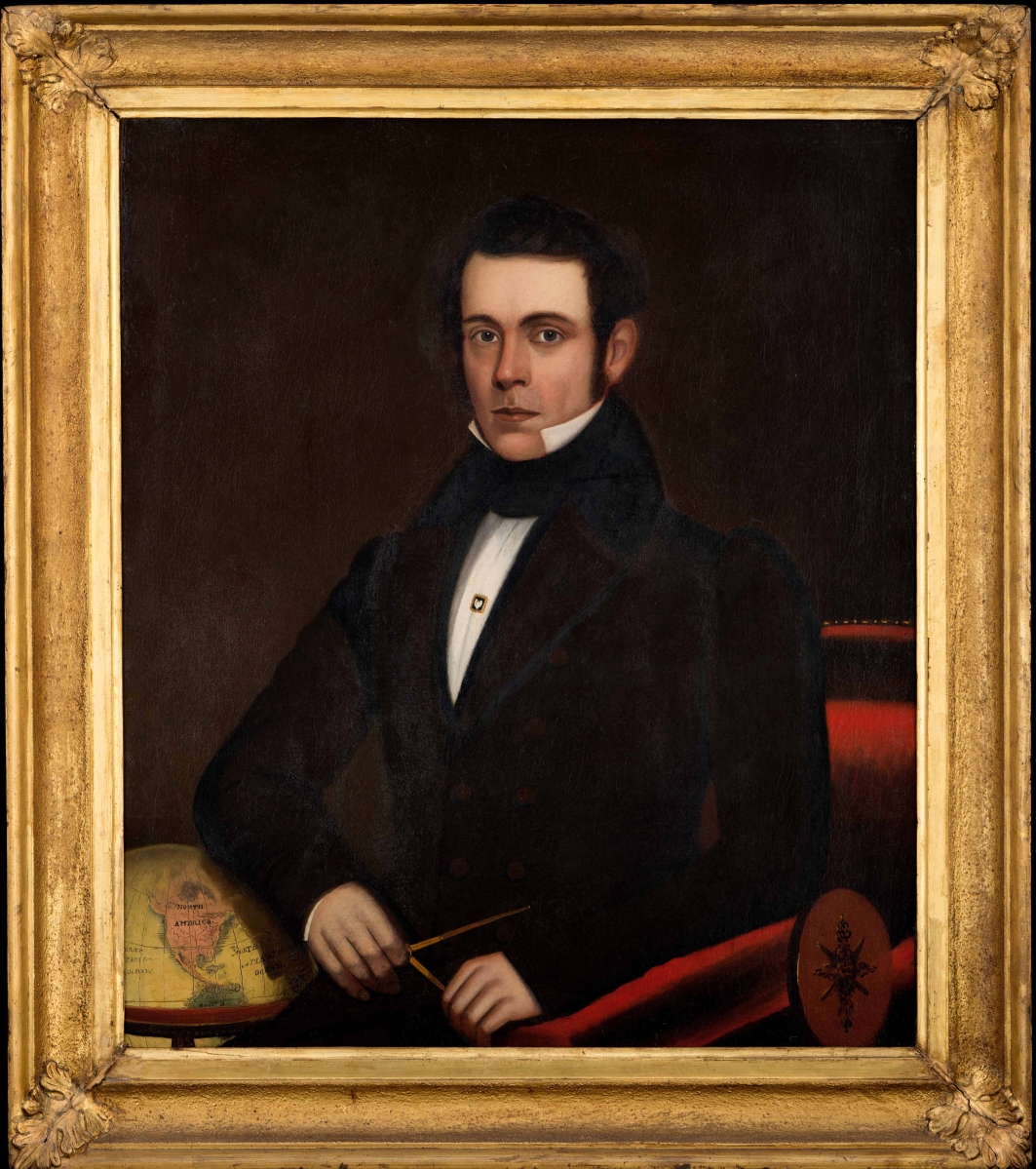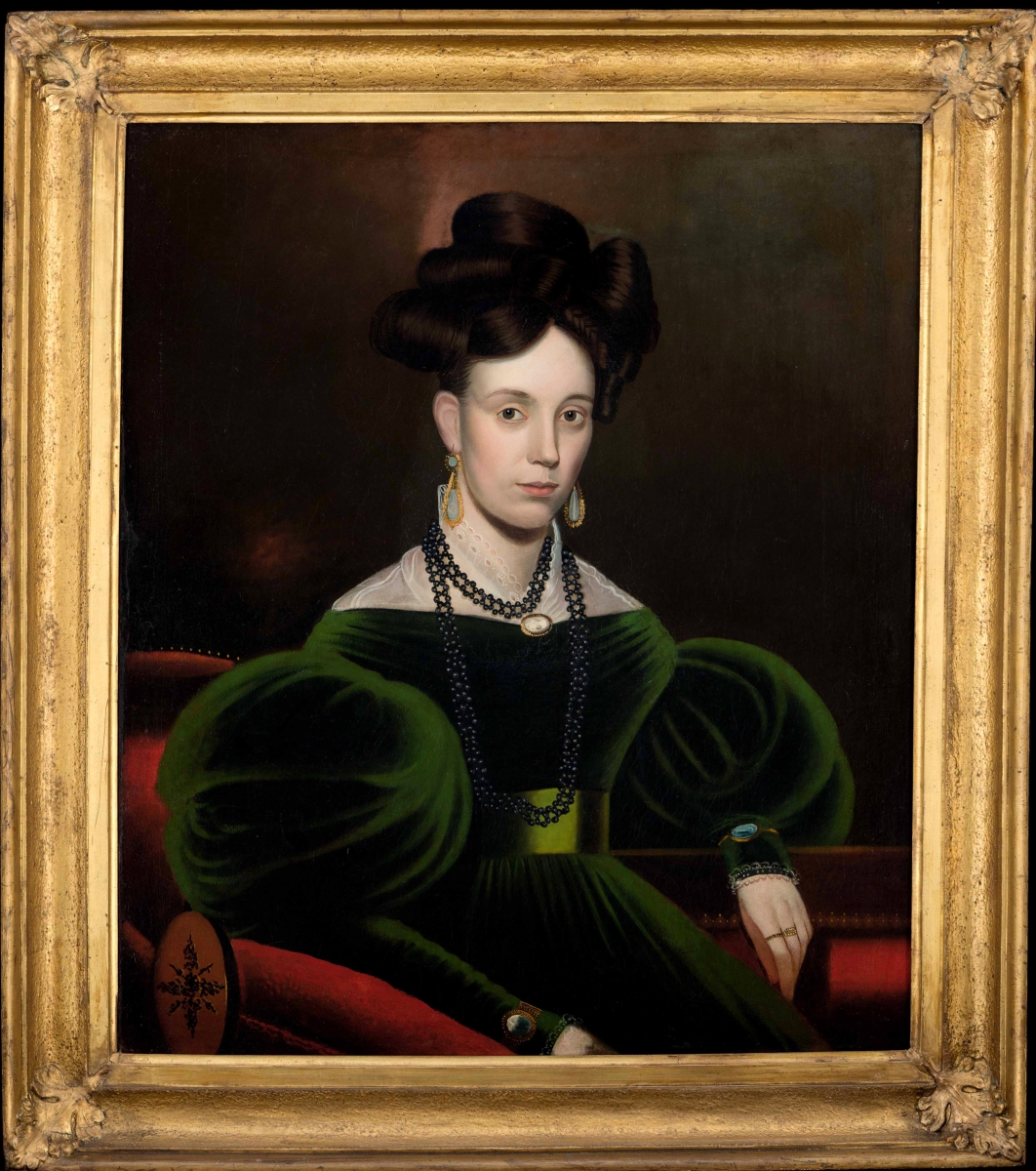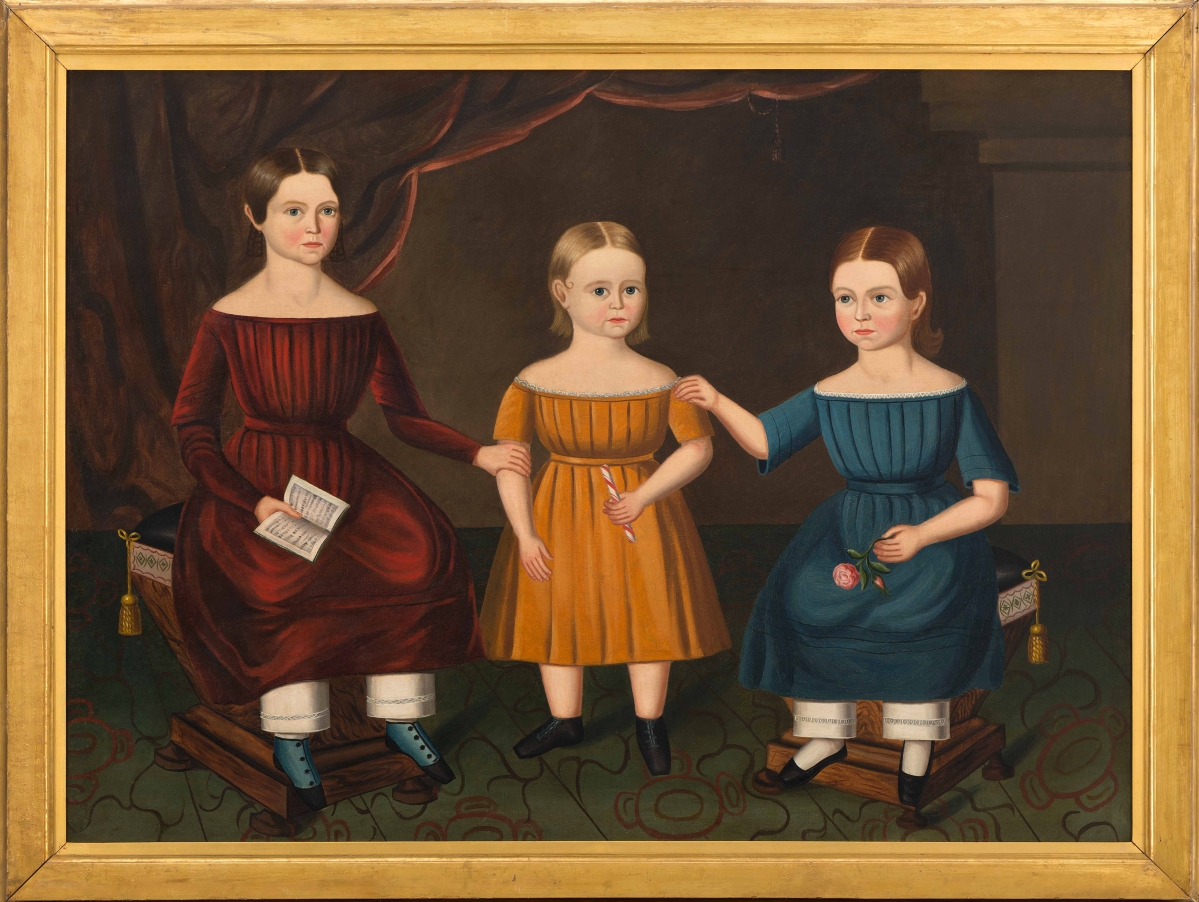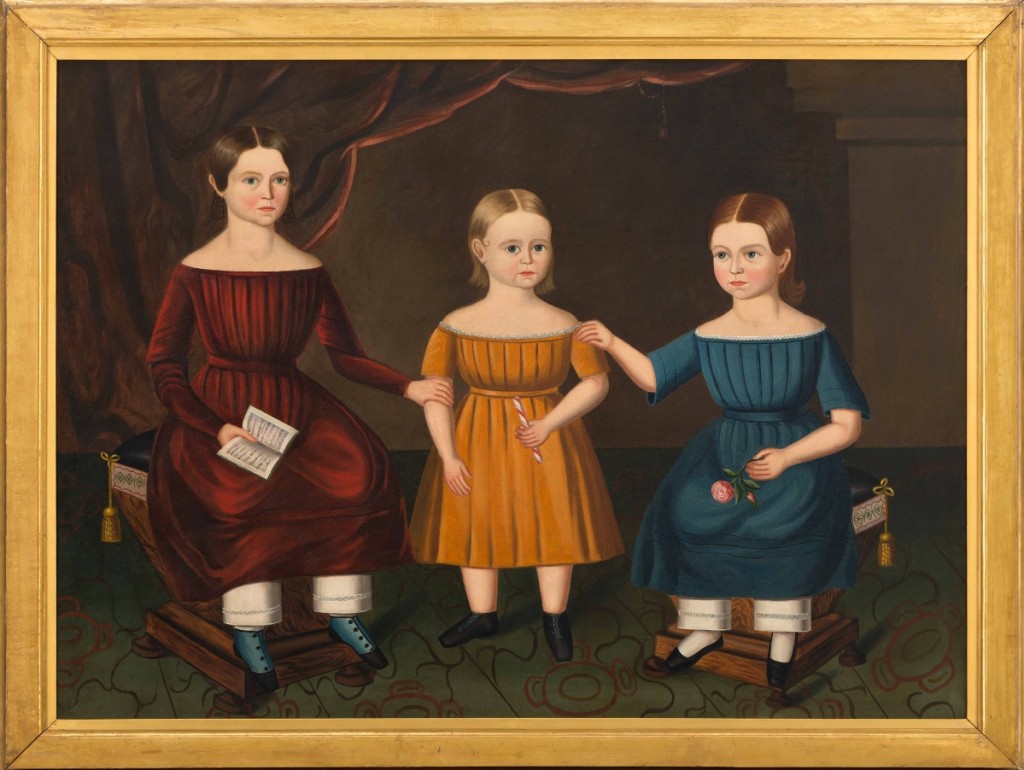
“The Hansbury Sisters,” possibly Pennsylvania, circa 1840, oil on canvas, museum purchase. All photos courtesy of the Art Museums of Colonial Williamsburg.
WILLIAMSBURG, VA. – Before there were photographs, people in the late Eighteenth-middle Nineteenth Century who wanted images of themselves and their family members commissioned portraits from a broad range of artists, many of whom had little or no academic training.
Today, these types of paintings that fall outside of academic tradition are characterized as folk portraiture. These often naive depictions of individuals, children, families and couples are beloved for their charming characterizations. The world-class assemblage of these portrayals in the Abby Aldrich Rockefeller Folk Art Museum, one of the Art Museums of Colonial Williamsburg, is among the most popular with visitors. The museum celebrates its diamond anniversary in 2017 with “We the People: American Folk Portraits,” a long-term exhibition of approximately 40 portraits on view through December 2019. The show highlights new accessions on view for the first time as well as constant favorites.
“Colonial Williamsburg is blessed with one of the nation’s finest and most geographically diverse collections of American folk portraits. With their deeply human qualities, they are in many ways the heart of the foundation’s folk art collection. It is highly fitting that they be featured in this special anniversary year,” said Ronald L. Hurst, the institution’s Carlisle H. Humelsine chief curator and vice president for collections, conservation and museums.
Several portraits recently acquired by the museum are represented in this exhibit, including an oil on canvas “Portrait of Daniel Clarke” by Jacob Frymire, an itinerant painter who made this portrait in Franklin County, Penn., probably in 1791. While the young gentleman depicted has long been identified as Daniel Clarke, his name could refer to several men of the same name and appropriate age who lived in the region where Frymire worked. The well-dressed man, the red drapery behind him and the substantial brick building in the background suggest that either the subject was wealthy or the setting may have been aspirational.
“Portrait of the Jennison Family” by Jefferson Gauntt (1805-1864) is another recently acquired painting to be shown. Gauntt depicts the close connections between the siblings in this strikingly unified composition. Each of the eight children born to the prosperous merchant William Jennison (1795-1866) is portrayed physically connected or overlapping: a baby in arms, arms around shoulders, hand in hand. The group portrait descended in the family of the young male sitter to the far right of the canvas.
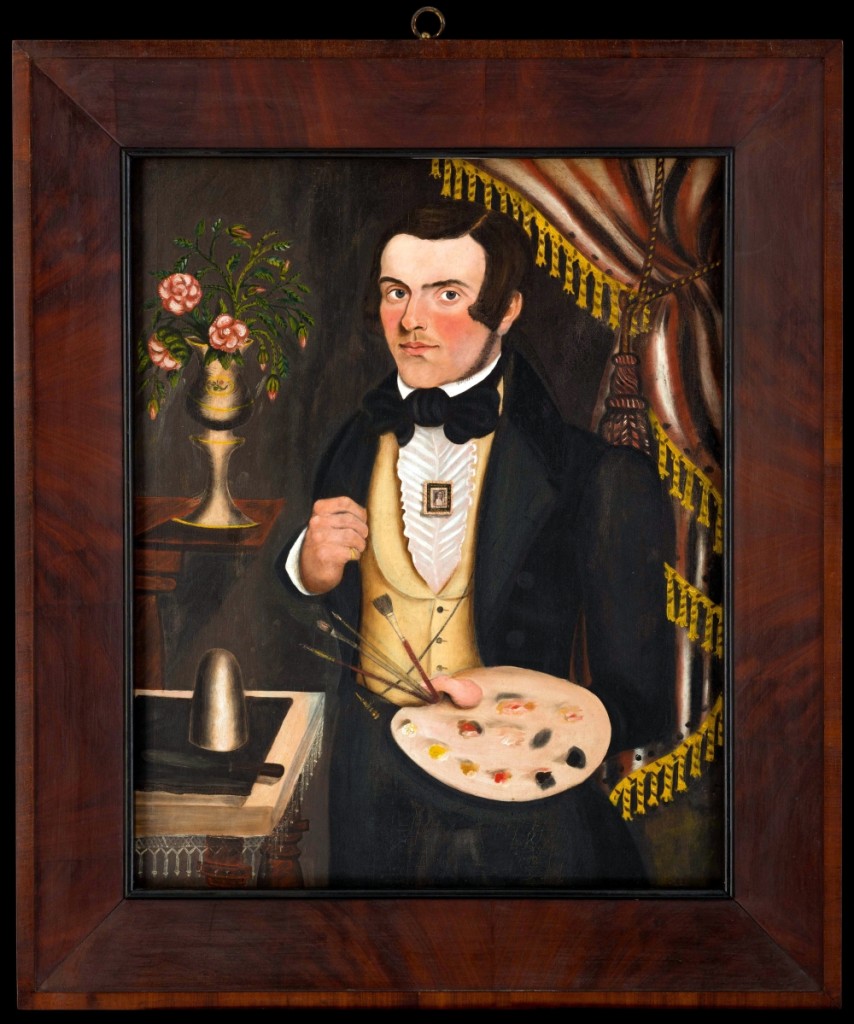
“Self-Portrait of Jonathan Adams Bartlett,” Jonathan Adams Bartlett, South Rumford, Maine, probably 1841, oil on canvas, museum purchase.
The itinerant artist John James Trumbull Arnold (1812-1865) painted another of the works on view for the first time here. “Portrait of Mary Mattingly,” an 1850 painting made in Mount Savage, Md., is one of three that the artist painted of this family’s members. Mattingly is the young daughter of Ellen and Sylvester Mattingly. She never married but lived independently and sold ice cream from her shop in Cumberland, Md.
On the reverse of this portrait, like many of Arnold’s paintings, is the artist’s fancifully written signature and date; he used the same ornate script on his pen and ink self-portrait (also in the Colonial Williamsburg collection). Arnold described himself as a “professor of penmanship,” an occupation which may have predisposed him to a heavy reliance on linear definition of hands and facial features in his portraits.
“The beauty of this exhibition is that it provides us with the platform to exhibit long-term favorite portraits from the collection alongside new acquisitions,” said Laura Pass Barry, the Juli Grainger curator of paintings, drawings and sculpture. “We have been fortunate over the past few years to acquire some wonderful examples of the form and we are thankful to the individuals who have helped to make this happen.”
Included in “We Are One” are several favorites in the collection, including “Portrait of Mrs Seth Wilkinson” by the Wilkinson Limner, probably painted between 1827 and 1830 in New York State. Twenty portraits are attributed to the artist who painted Mrs Wilkinson, and because her likeness was among the first studied and possibly remains the best known, her name was adapted to identify her portrait painter. In this case, “limner” means “painter.”
Evidence about the Wilkinson Limner suggests that he began his career as a portraitist while incarcerated at the state prison in Charlestown, Mass. About 1827, he began creating more opulent settings for his sitters, perhaps as a reflection of his newly regained freedom.
It is also only fitting that an exhibition celebrating the museum’s 60th anniversary includes a portrait that comes from Abby Rockefeller’s collection. Such is the case with “Two Children,” an unusual American portrait, circa 1810. It is notable in several aspects, including the placement of the two subjects within the painting’s overall design, which focuses on the children even as the darkened room, open door and temporarily-placed bench or chair in the background creates an air of mystery around them. The children seem to bridge two worlds; their setting seems to imply that they yearn to go outside but cannot.
The Art Museums of Colonial Williamsburg include the Abby Aldrich Rockefeller Folk Art Museum and the DeWitt Wallace Decorative Arts Museum. For more information, www.history.org or 757-229-1000.

